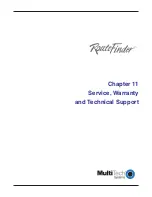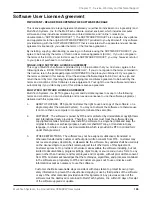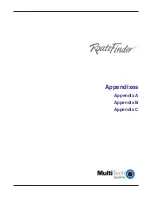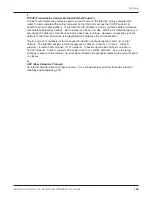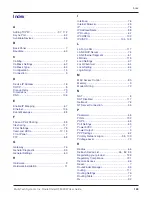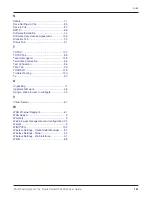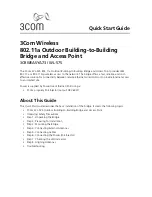
137
Glossary
Multi-Tech Systems, Inc. RouteFinder RF802EW User Guide
IP Addresses
A computer on the Internet is identified by an IP Address. A computer’s IP address is like a telephone
number. It identifies one address or in this case one computing device. Every computer or device on
the network must have a different IP address.
An IP address consists of four groups of numbers called
octets
, which are separated by periods. For
example, 213 .0.0.1 is an IP address. An IP address consists of a
network portion
and a
host
portion
. The network portion identifies the subnet that the computer belongs to. The host portion
identifies the particular computer or node on that network.
IP addresses can either be dynamic (temporary) or static (permanent or fixed). A dynamic IP
address is a temporary IP address that is assigned to you by a server (usually a DHCP server) when
the computer is powered on. A static IP address is a permanent IP address that is set up on each
individual computer. When your RouteFinder dials-up your ISP, your ISP can give it a fixed or
dynamic IP address. Likewise when you power on your computer, the RF802EW can give your
computer a dynamic or fixed IP address.
ISDN TA
(Integrated Services Digital Network Terminal Adapter) ISDN is a high speed digital telephone
connection involving the digitization of the telephone network using existing wiring. An ISDN Terminal
Adapter can be thought of as an ISDN Modem.
ISP (Internet Service Provider)
An organization that provides Internet services. An ISP is the company that provides the connection
from your computer to the Internet. An ISP can offer a range of services, such as dial-up accounts,
e-mail, web hosting or News.
L
LAN (Local Area Network
)
A data network intended to serve an area of only a few square kilometers or less. This often means
a small private network in companies.
M
ML-PPP (Also called MP or MPPP)
Stands for Multilink Point to Point Protocol and is an advancement of the PPP protocol that allows for
the bridging or bundling of two ISDN or analog channels for faster connections.
MAC address
The hardware address of a Device connected to a shared media. To find out the MAC address of
your computer please see
Troubleshooting.
N
NAT Technology
NAT is short for Network Address Translation. NAT is an Internet standard that enables a local-area
network to use one set of IP addresses for internal traffic and a second set of IP addresses for
external traffic. The RF802EW provides the necessary IP address translations. NAT is sometimes
referred to as “IP Address Masquerading”. This technology provides a type of firewall by hiding the
internal IP addresses.
How does it work?
Every IP address on the Internet is a Registered or legal IP address. Therefore, no two IP addresses
on the Internet are the same. For you to use your network device to access the Internet you need a
registered IP address from your ISP (Internet Service Provider). Using a registered IP address on
your Intranet or LAN is not necessary. When clients on your network start surfing the Internet, your
RouteFinder will receive all the requests for information. The RouteFinder will dial-up your ISP and
your ISP will give your RouteFinder a registered legal IP address. Your RouteFinder uses this IP
address to request information saying ,”send all information back to me at this IP address”. In
essence it appears as though all your clients requests are coming from that one IP address (hence
the name IP masquerading). When all the information comes back through the RouteFinder, it sorts
the data using an Address Translation Table and returns the data to the computer on your network
that requested it.
Summary of Contents for RouteFinder RF802EW
Page 1: ...Model RF802EW Wireless Router Access Point User Guide ...
Page 5: ...Chapter 1 Introduction ...
Page 10: ...Chapter 2 Hardware Installation ...
Page 13: ...Chapter 3 Software Installation and Configuration ...
Page 24: ...Chapter 4 Web Browser Configuration and Management ...
Page 47: ...Chapter 5 Telnet ...
Page 54: ...Chapter 6 RouteFinder Manager ...
Page 84: ...Chapter 7 RouteFinder Monitor ...
Page 93: ...Chapter 8 LAN Client Settings ...
Page 116: ...Chapter 9 LAN to LAN Settings ...
Page 119: ...Chapter 10 Troubleshooting ...
Page 123: ...Chapter 11 Service Warranty and Technical Support ...
Page 130: ...Appendixes Appendix A Appendix B Appendix C ...
Page 135: ...Glossary ...

